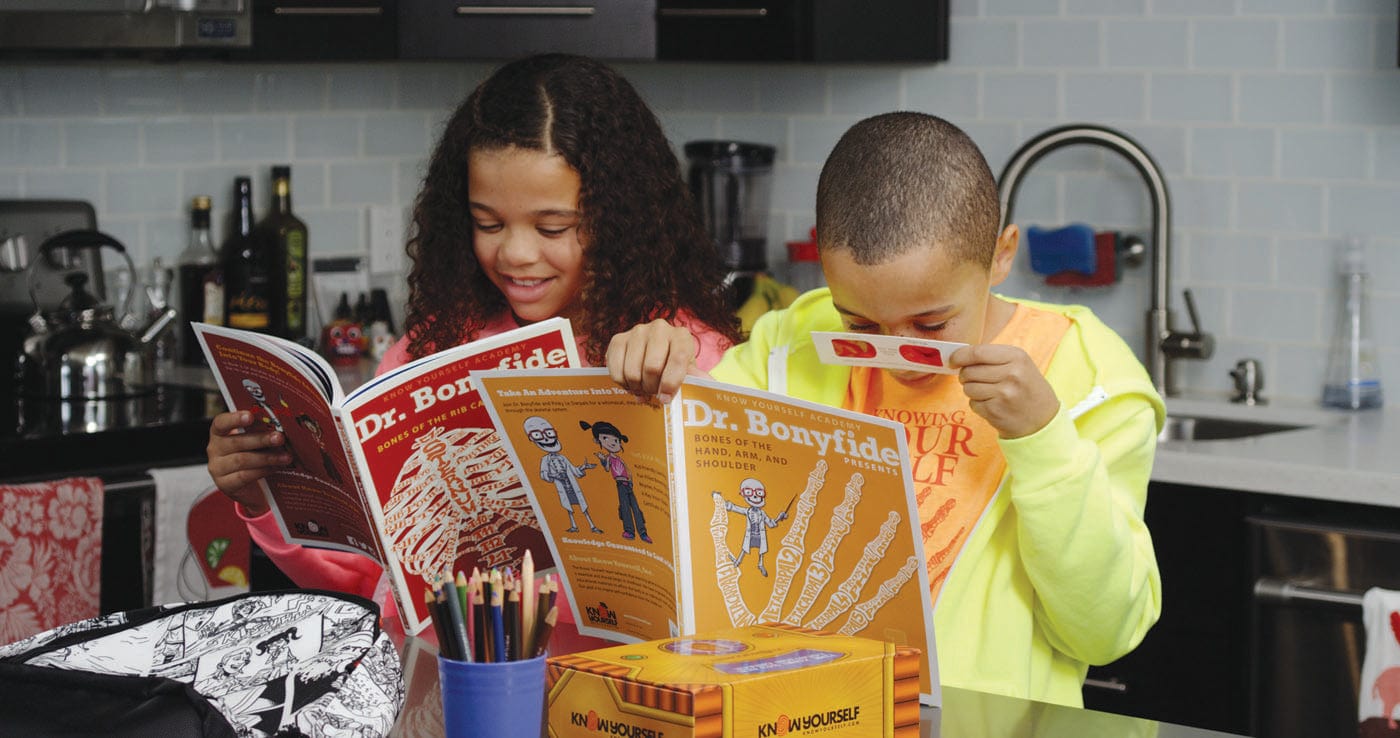
Say you need to get a bunch of your friends—more than a quintillion of them, in fact—from one place to another to do an important job. Naturally, you’re going to need a creative way to get them there. Would you use a plane, train, or car? Maybe you’d need all of the above! This is exactly what the respiratory system does: it gets oxygen from the air, through the body, and all the way to the tissues to help the cells make energy from the food you eat. Then it needs to send the cells’ waste—carbon dioxide—out of the body. We call this process gas exchange. Fortunately, it gets a hand from your circulatory system and several clever modes of transportation to get the job done.
The trip begins when you breathe air in through your nose or mouth, also called inspiration or inhalation. Next, the air travels down your trachea (say it like this: “TRAY-kee-uh”) to pathways in your lungs.
Think of these like runways that a fleet of planes are constantly landing on, bringing loads of oxygen passengers to their gates. These runways get smaller and smaller, starting with the two large bronchi (“BRONK-eye”), then branching off into thinner bronchioles (“bronk-EE-olz”), and finally arriving at small pockets called alveoli (“al-VEE-o-lie”). *(These are not to be confused with ravioli, those are small pockets of pasta filled with cheese....)
It’s hard to believe, but we all have millions of alveoli in our lungs, and these are the airport gates where all that oxygen you breathed in ends up, waiting to be picked up for the next part of its journey.
Running right next to your alveoli are the capillaries (small blood vessels) of your circulatory system, like a network of highways that can take passengers out to the most remote destinations of your body. The oxygen gets to the highway by diffusion: molecules like oxygen move from a really concentrated (packed with molecules)area to a less concentrated area, like a crowd at an airport dispersing as people go to their cars. With only a thin barrier separating the two, the crowd of oxygen easily moves from the lungs into the less packed area, the capillaries.
Creative Commons License CC BY-SA 4.0 https://creativecommons.org/licenses/by-sa/4.0/deed.en and artwork: https://ecampusontario.pressbooks.pub/introanimalphysiology2nded/chapter/3-1/
Hemoglobin has an incredible quality called cooperative binding—which means that once one oxygen has hopped on board, it makes it easier for the next one to join. It does this by changing the shape of hemoglobin—just a little—which allows the next “seat” to become available—so another oxygen gets on, making it easier for a third oxygen to get on in a similar manner. Finally, all four seats are filled as the red blood cell makes its way to your tissues.
Meanwhile, your cells are using up oxygen and creating carbon dioxide waste, which needs to be released from the body. When red blood cells travel through your tissues, various conditions, like temperature and acidity, work like exit signs to tell the oxygen molecules that it’s time to start hopping off the hemoglobin bus. Just like when they boarded, as each oxygen molecule leaves, the next one is more likely to get off until all four oxygens have left the hemoglobin. The empty seats make room for carbon dioxide to enter—and just like the oxygen, as one gets on, it makes room in the next seat.
Finally, your red blood cells take the highway back through your lungs. Once they arrive, oxygen catches the hemoglobin bus again, which causes carbon dioxide to hop off. Because the carbon dioxide is crowded into the capillaries (highly concentrated), it quickly moves into the less-crowded alveoli of the lungs through diffusion. At that point, it’s back in the airport and ready to take flight by being expelled—back through the bronchioles, the bronchi, and your trachea—through your nose or mouth when you breathe out (also called expiration or exhalation).
Of course, this whole process happens over and over again, thousands of times a day—that’s one busy airport! It’s too bad none of those oxygen molecules picked up a souvenir for you at the gift shop.









Leave a comment (all fields required)